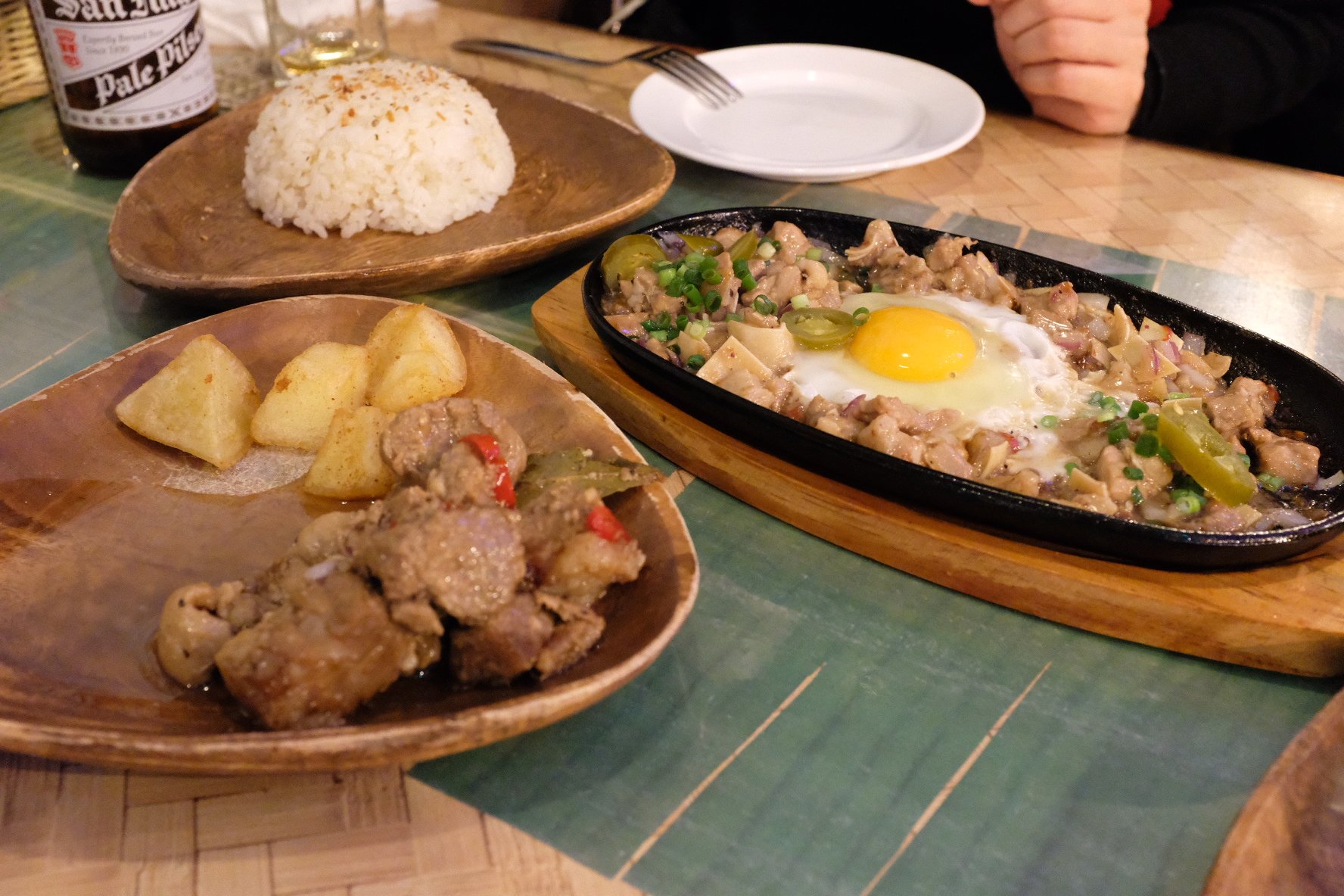Amie’s Rotisserie Chicken: an early Thanksgiving with Kana & Miyu
Amie’s Rotisserie Chicken brings authentic Cebuano cuisine to the modest yet cuisine-rich neighborhood of Chitose-Funabashi. As one of Tokyo’s most recognizable pinoy establishments, it serves as a taste of home for the city’s nearly 34,000 Filipino immigrants while introducing such cuisine to Japanese people in a familiar izakaya-style setting.
The selection is vast in both food options and drinks, offering staples of both in the form of pork adobo, beef tapa, San Miguel Beer, and Red Horse Malt Liquor. However, as the name suggests, the restaurant’s claim to fame is their Cebuano-style rotisserie chicken (known as lechon manok in Bisaya), which can be had as a quarater, half, or full chicken with or without their signature patatoes. Lechon manok is characterized by its garlicy savoriness and fagrant herby flavor, reminiscent of a classic North American rotisserie chicken but with a bit more of an Asian palette twang due to its use of soy sauce and specific herbs. The authentic flavor is on full display at Amie’s, only further accentuated by the restaurant’s signature homemade sauce.


I visited Amie’s again recently with my friends Kana and Miyu as a bit of an early Thanksgiving celebration. With plans and preparations to travel back to the United States in the works, time for a dedicated Thanksgiving celebration complete with home cooking, unfortunately, wasn’t in the cards. But with a full rotisserie chicken on the menu at Amie’s to serve as a “turkey,” it was an easy choice.
Also coming into play was the connection that Filipino food had with our experiences back in the United States. As someone of Filipino heritage, I grew up eating that type of food regularly, Thanksgiving included, served alongside more traditional American Thanksgiving staples like the aforementioned turkey, sweet potatoes, and green beans.
Kana and Miyu are both American with Japanese ancestry, and with what often happens amongst diaspora Asian communities, familiarity with other Asian cultures and cuisines is commonplace. They both had their favorite Filipino dishes they anticipated ordering, remarking on the nostalgia of the dishes and the “Thanksgiving-esque” environment.
The night was characterized by San Miguels in hand, remiscence over Thanksgiving traditions back home, and, of course, K-Pop.


